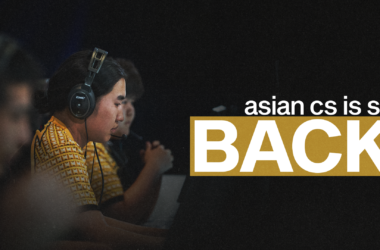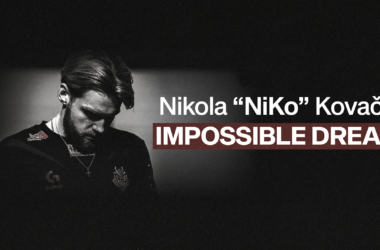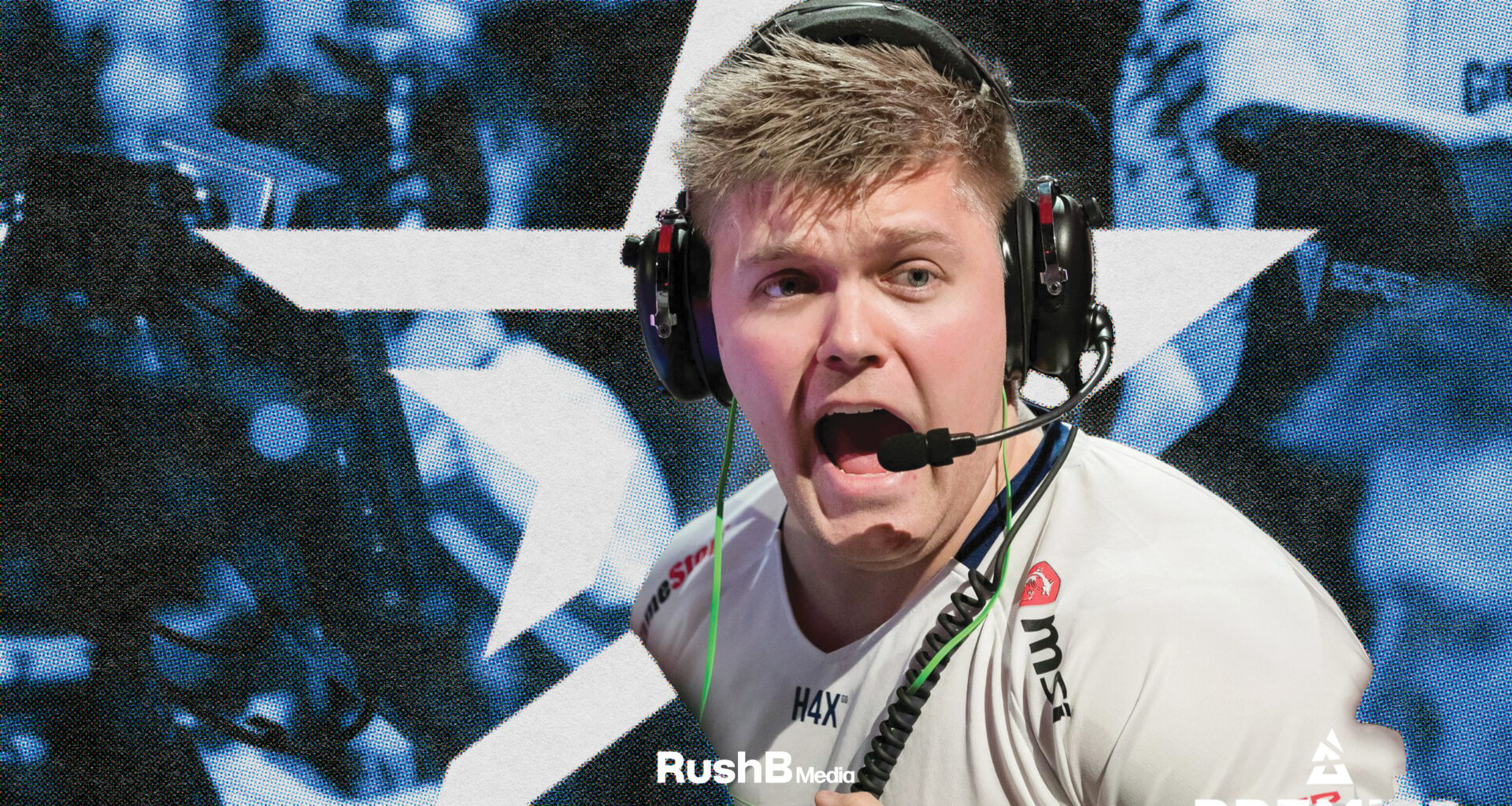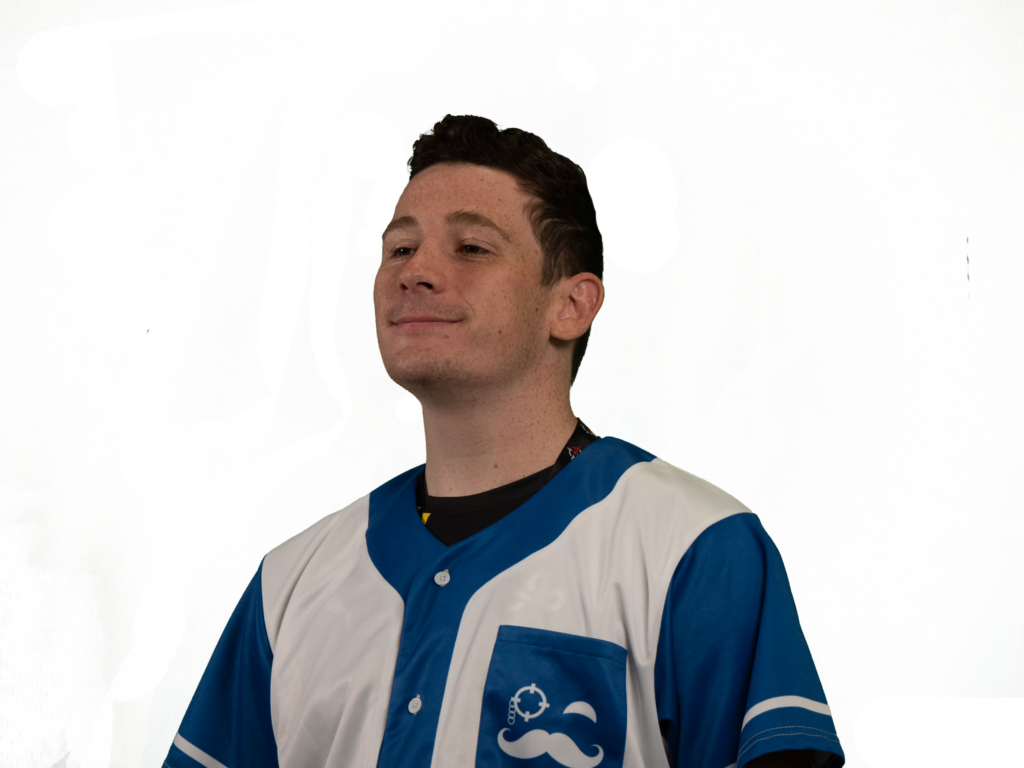A little over a year ago, Benjamin “blameF” Bremer was on the offensive. His Complexity side had just won the BLAST Premier Spring Finals 2020; a victory that was only possible thanks to the Dane’s 1.27 rating. Even more impressive, his rating was 0.05 higher than s1mple’s, 0.06 higher than NiKo’s, and 0.16 higher than any of his teammates. BlameF, two years after breaking out of obscurity by beating LDLC at Copenhagen Games, was threatening to break into the pantheon of great Danish captains.
His form in 2020 continued, recording nine events with a rating of 1.19 or higher and climbing to #6 in HLTV.org’s top 20. Even more impressive was that blameF did all of this while in-game leading. He broke the mould of the traditional low-fragging Danish IGL and instead made himself the star lurker. Complexity’s goal for 2021, according to blameF, was “to peak at some point throughout the year at number one.”
Complexity’s plateau
Their peak, so far, has been #8 — for one short week. They are currently #16. However, part of this turmoil was out of their control. Owen “oBo” Schlatter’s sudden departure in September 2020 and Valentin “poizon” Vasilev’s health issues resulted in Complexity fielding ten players in a little over five months. As a result, we can only judge Complexity’s underperformance without caveat in two short periods over an eighteen-month span.
The first is the summer run in 2020, where they failed to convert their BLAST victory into sustained form. Back-to-back eliminations to Heroic drained momentum, and before Complexity could recover oBo had announced his departure. The second came within the last six months after poizon’s return from illness. The roster did show brief glimpses at their potential, such as defeating Na’Vi’ in a run to the quarterfinals of ESL Pro League S13, but they have otherwise underwhelmed.
Unceremonious failures came at the three most important events of the year: 17th-20th at IEM Katowice 2020, 10th at the Flashpoint 3 RMR, and 13th-16th at IEM Cologne 2021. blameF recorded a rating of 1.20 at these three events, the 7th highest of anyone attending. That his stellar individual performances did not result in team success should be a worry for the young IGL, and finding a solution to that is paramount to Complexity evolving into a tier 1 mainstay.

Fingers are often pointed at the other members of Complexity; in 2021 jks has dropped into <1.00 rating for the first time in his career, and poizon, the AWPer, has only managed 1.00. However, it is far more pertinent to question why the individual members of Complexity are underperforming. Even Kristian “k0nfig” Wienecke has failed to show consistency despite having his preferred roles.
Complexity’s moves over the summer might reveal their solution — both Keita and Will “RUSH” Wierzba have been cut. Keita’s departure (to FNATIC) has gone under the radar but is interesting since blameF has praised the Briton publicly. On HLTV Confirmed, he publicized Keita’s commitment by telling of how he went over to oBo’s apartment late at night to teach him grenade line-ups. However, in an era where coaches like Danny “zonic” Sørensen and Rémy “XTQZZZ” Quoniam have complete power over the roster, Keita always seemed far more of an analyst than a head coach.
He watched demos, taught grenade line-ups, and did some anti-strat work. And when he did spot something in a demo, he would bookmark it for blameF to follow up on. At the time, just after their BLAST win, this was framed as a positive; it showed blameF’s immense dedication to his craft. After all, this is the guy who deathmatches for three hours before officials and learns all his teammate’s grenade line-ups.
Yet, it also reveals the workload blameF puts himself under. Keita’s replacement, Luis “peacemaker” Tadeu, should have the personality to challenge blameF and spread the workload. The signing of Graham “messioso” Pitt as General Manager, previously of RFRSH and then North, should support Peacemaker in this. To be blunt, a shakeup might be welcomed; blameF’s default-heavy style has gone stale in recent months.
The drawbacks to the default-heavy style of blameF
In instrumental losses to Virtus.pro at Cologne and FunPlus Phoenix at Flashpoint 3, Complexity seemed out of ideas. Slow hit after slow hit resulted in the entry pack’s evisceration and blameF alone. FPX, for their part, showed an immense CT-side backed by constant information plays. That does not, however, free Complexity from criticism. The very purpose of a default-heavy style is to give freedom to your aggressive players in hope of a pick.
Against FPX on Vertigo, k0nfig secured five first kills. blameF had two. Nobody else had any. And from the eye test, these first kills were often traded anyway. Of the four rounds won by Complexity, one was an A rush and the second a tight 1v1 win by blameF. For the third, and last proper gun round, k0nfig found a huge timing for two entry frags on A. In fairness, the 4-16 scoreline on vertigo is skewed by two lost 4v1 clutches. Yet, whatever the circumstances, ten rounds in two maps against FPX is not acceptable for a team of Complexity’s talent.
On LAN at IEM Cologne, the same problems cropped up again. Complexity, at their best, resemble the 4-1 death ball of 2015 EnVyUs, but at their worst leave blameF on his own far too often. Lurking, like it did for Vincent “Happy” Schopenhauer, allows blameF to focus on calling in the early and mid-round, whilst simultaneously setting up himself for trades and clutches. However, there are no trades or clutches if the pack fails to leave a dent on the opponent’s defences.
A default-heavy style also results in a lot of utility being used on map control; in the elimination maps against FPX and VP, there was not one ‘traditional’ execute. Counter-Strike has evolved; Executes are not the be-all and end-all. Yet, when the entry pack is failing, having a few up the sleeve would be helpful. jks, RUSH, and poizon all underperformed in these series, but they were often brawling dry or jumping through smokes.
How are the roles working within @Complexity during #ESLProLeague now that they have a stand-in?@FrankieWard caught up with @blameFFFFF to get some inside information. 👀 pic.twitter.com/3GGNpSC9k1
— ESL Counter-Strike (@ESLCS) August 25, 2021
peacemaker’s first job will be to help Complexity come up with a more extensive playbook, something already alluded to in blameF’s interview with Frankie above. BlameF is clearly a competent tactician; he has led both Heroic and Complexity to success. That does not change the fact that Complexity must diversify their T-sides to improve.
Without insider knowledge, it is hard to pin down exactly why jks and poizon are underperforming. They both have valid excuses: jks is far from home, and poizon is young. However, strategy must also contribute to it; Complexity picking Vertigo against FPX, a map where T-sided AWPs are rarely worthwhile, simply set up poizon to underperform. In addition, jks’ ideal roles are probably the ones blameF currently possesses.
Role clashes and RUSH’s removal
This role clash is why removing RUSH came as a shock. Patrick “es3tag” Hansen is a clear upgrade in raw firepower and a remarkably versatile player, but this move does not solve the problems already present. RUSH’s ratings have fallen off slightly in 2021, but he is a support in the purest sense of the role. He would jump out of the window in B on Mirage in one half and anchor the same site on the other. It is telling that success at EPL has come with Niels “NaToSaphiX” Sillassen, a player in the mould of RUSH.
k0nfig, despite being Complexity’s most aggressive player, is not at his best as a pure entry fragger like RUSH was. His aim is all about crosshair placement and micro-adjustments, not snappy flicks. At his best, he was second-in, just behind a willing bait in Mathias “MSL” Lauridsen. So, if not k0nfig, who can replace RUSH’s T-sided roles? Es3tag’s success at Astralis came in Andreas “Xyp9x” Højsleth’s passive roles, but he has also played as an IGL, awper, and entry.
If the versatile es3tag can perform RUSH’s roles with an extra 0.10 in rating, then this move is a no-brainer. There is also something to be said for es3tag’s experience as an IGL at Heroic and work alongside zonic and Lukas “gla1ve” Rossander. This could enable him to help with mid-round calls, an invaluable but intangible tool in helping blameF on the other side of the map.
Despite this, questions over Complexity’s role balance are valid; an obvious firepower upgrade does not always result in an uptick in results. One solution might be in plain sight, in blameF’s interview with HLTV.org just over a year ago.
“Lurking/clutching was never my preferred role, but playing with [aggressive] players like RUSH, k0nfig, and poizon … it kinda made sense that I took on the lurking role on the team.”
blameF in his top 20 interview, January 2021 (credit: HLTV.org)
Complexity’s struggles come when the entry pack fails to give their star in-game leader enough of a chance late in the round. blameF’s K/D has not really fallen, but his Impact rating fell to 1.14 after successive years of 1.19–1.20. 1.14 is still far above average, but by moving himself back into the role he performed so well at Heroic, blameF can use his skill to buff the entry pack and force rounds into Complexity’s favour.
blameF: Complexity’s new entry fragger?
BlameF has had success lurking, but there is a reason the best in-game leaders have all been closer to the pack. Being in the pack lets the captain see why executes are failing in real-time. It also increases responsibility. A good lurk wins rounds on its own, but not as often as a good entry. Now that k0nfig is absent due to breaking his wrist, there is an even greater firepower gap in Complexity’s already underperforming pack. blameF can solve this, even if he goes in second or third.
Once k0nfig returns, an entry pack of k0nfig, blameF, and poizon, with es3tag and jks on the extremities, doesn’t sound half bad. All this, of course, may not happen. es3tag has played entry on T-side and played k0nfig’s CT spots so far at ESL Pro League, so his ultimate role is hard to predict. However, blameF putting himself closer to the action has been instrumental to Complexity progressing out of a tough Pro League group.
In Pro League, blameF has a 37.3% entry attempt ratio, 17.4% higher than his annual average. Even if this cannot be maintained, getting that figure consistently around 30% should be a goal for Complexity. BlameF is too good a player to not be directly impacting every single round on T-side. Lurking may help him focus on calling, but with jks and poizon’s continued underperformance there is simply too much work to do for the 3rd member of the entry pack, whether that is k0nfig or es3tag.
blameF and peacemaker have to find a solution. It might be moving blameF permanently into the pack or maybe freeing up jks to return to a more passive role. Of course, jks and poizon might not come good, and given that messioso and 3/5ths of the core now speak Danish, it will be even harder not to look at Heroic or out-of-contract Astralis players if Complexity’s stagnation continues. Time is ticking on the project. Once k0nfig returns, that pressure will be higher than ever. And that pressure is on blameF more than anyone. In spite of his remarkable ratings, his status as IGL makes him responsible for the whole team.
Conclusion
Twelve months ago, blameF’s career had only gone in one direction – up. In 2021, his reputation has threatened to stall. At some point, blameF will win S-tier trophies. He is too good, and too young, not to. The question is when he will.
But why can it not be at Complexity? What if he awakened jks, ignited poizon, and unleashed the beast that is k0nfig in full force? What if, whilst putting up EVP and MVP numbers, he put himself into the pantheon of great Danish CSGO leaders?
blameF has shown that he can do it. Now, time will tell whether he will.








